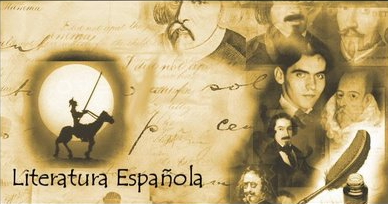


Whose woods these are I think I know.
His house is in the village though;
He will not see me stopping here
To watch his woods fill up with snow.
My little horse must think it queer
To stop without a farmhouse near
Between the woods and frozen lake
The darkest evening of the year.
He gives his harness bells a shake
To ask if there is some mistake.
The only other sound's the sweep
Of easy wind and downy flake.
The woods are lovely, dark and deep,
But I have promises to keep,
And miles to go before I sleep,
And miles to go before I sleep.
A Brief Comparison of Works by Bruegel and Frost
(by Gabriel Yardley)
Bruegel's "The Return of the Hunters" and Frost's "Stopping by Woods on a Snowy Evening" both describe a winter's scene. Snow, and the coldness of winter, feature in both painting and poem; nature is also a central element. In addition, both depict a winter's evening which awaits the onset of night. Nevertheless, while both may have these elements in common, these similarities appear to serve only as a point of departure for poet and artist as they focus on differing aspects of winter, and a number of contrasts which represent this approach may briefly be referred to. It is cold, yet there is the warmth of humanity and a feeling of security and companionship in the painting. There are signs of domestic comfort and basic creature comforts. Moreover at the ridge of the hill a group of people are roasting a pig; one can almost hear the fire crackling, the birds twittering on the branches and the shouts and laughter of those playing on the ice-covered pond. In contrast however, in the poem, night is falling and the rider is nowhere near home: no living thing is to be seen or heard except for the bells of the horse:
He gives his harness bells a shake
To ask if there is some mistake.
The only other sound's the sweep
Of easy wind and downy flake.
It could be said that these only serve to bring the rider out of his reverie and to remind him that he has far to go. It is also interesting to note that the image of a solitary rider on horseback conveys an image of loneliness. A lone rider is often interpreted as symbolic of rugged independence, yet as the horse stops "Between woods and frozen lake," the picture is not one of independent man but man isolated. In contrast, the painting depicts a pack of hunting dogs, thus further emphasizing a sense of the companionship, with man's indispensable "best friend," his dog, in evidence. The frozen lake is forbidding and emphasizes the coldness of "The darkest evening of the year." In the painting however, a frozen river and pond are scenes of diversion and merriment, and heretoo,can be seen nature complementing the commotion of life, the stark inactivity of the poem contrasting with the lively and joyful recreation present in the painting.
Although the hunters might be tired and weary, they nevertheless have warmth, food and rest to look forward to and to spur them on the last few yards. Contrastingly, in the poem, the rider has stopped, almost mesmerized by the scene stretching out before him as he watches the "Woods fill up with snow." The woods look inviting, yet he has "promises to keep," and the reader can almost feel the implied weariness and sleepless distance that the rider has to go, in the alternating rhythmic weak-strong stress, of the final two lines: "And miles to go before I sleep/ And miles to go before I sleep." In both we are in the heart of winter, with night soon to fall: in one we witness a homecoming while in the other, the undertaking of a journey.
Frost is part of the landscape's solitude, of nature at its loneliest; in Bruegel, nature, as mentioned earlier, is an integral part of various social activities, for example, hunting, skating, and the stoking of a fire. In the poem, however, nature is central to an absence of activity: the "white" and "black" of the "Snowy Evening." Its title may be interpreted as reflecting this absence, and may be said to represent an absence of colour and to be symbolic of nothingness.
It may thus be said that while these two differing forms of artistic expression depict a winter's scene, the differing approach of both artist and poet create landscapes which, while sharing certain elements, nevertheless contrast sharply in both mood and atmosphere.